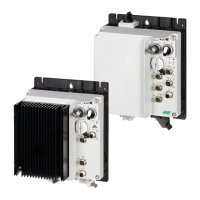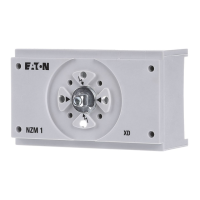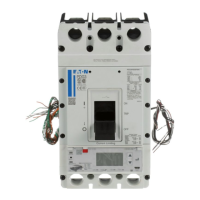2 Engineering
2.14 Regenerative braking
Rapid Link 5 · RAMO5 · RASP5 05/20 MN034004EN www.eaton.com 77
2.14 Regenerative braking
In certain operating conditions, the motor may run as a generator in certain
applications (regenerative braking operation).
Figure 35: Regenerative braking with external braking resistance
a Machine flywheel mass
b Inverter with brake chopper (brake transistor)
c Brake resistor (R
B
) → Energy flow (braking torque)
Examples include:
• Lowering in hoisting gear and conveyor applications
• Controlled speed reduction in the case of large load inertias
(flywheels)
• A fast speed reduction in dynamic travel drives
When the motor operates as a generator, its braking energy will be fed into
the variable frequency drive’s DC-Link via the inverter. The DC-Link voltage
U
DC
is increased as a result. If the voltage value is too high, the RASP5 varia-
ble frequency drive will disable its inverter. after which the motor will coast
uncontrolled.
If a braking chopper is present, the braking energy fed back into the drive can
be dissipated in order to limit the DC-Link voltage.
A braking chopper is integrated in the RASP5 speed controller.
The braking chopper function must be activated in parameter P4-05.
The braking chopper is switched on automatically if the braking energy being
fed back causes the DC-Link Voltage to increase to the switch-on voltage of
the braking chopper.
→
Only for RASP5-…-xxxx1xxS1

